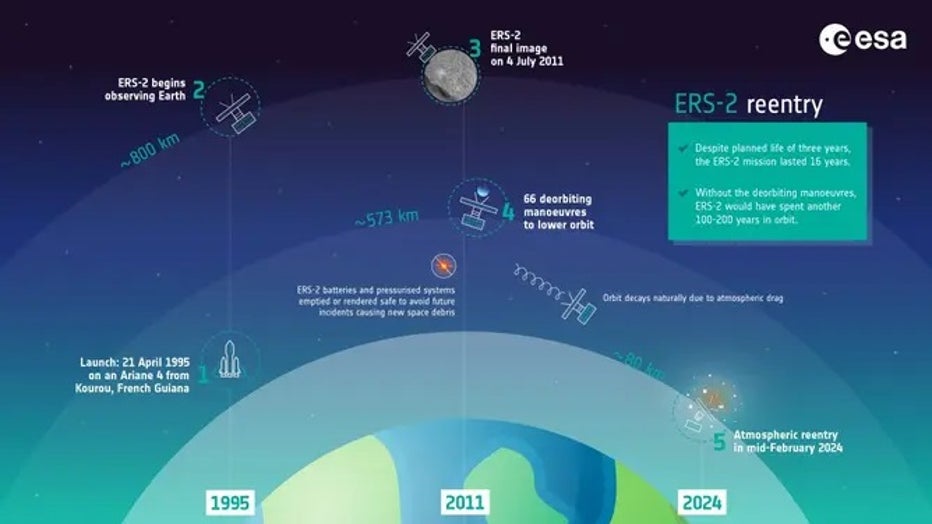School bus-sized satellite to come crashing into Earth's atmosphere this week

The Along Track Scanning Radiometer on ERS provided the capability to accurately track sea-surface temperature. (Image: ESA)
A defunct European Space Agency satellite the size of a school bus will come crashing down to Earth this week, more than a decade after the spacecraft finished its mission observing Earth's systems and natural disasters.
ESA's first advanced Earth-observing satellite, the ERS-2, launched on April 21, 1995. After studying Earth's land, oceans and polar caps for 16 years, ESA opted to end its operation in 2011 and deorbit the satellite to prevent the creation of more space debris.
NASA, ESA and other international aerospace community members have guidelines to reduce dead satellites and rocket parts in low-Earth orbit by requiring post-mission disposal of natural decay or a controlled entry.
EUROPE OFFICIALLY SET NEW RECORD IN 2023 FOR CONTINENT'S HOTTEST TEMPERATURE EVER
For ERS-2, mission control sent a series of commands to the 38-foot-tall satellite to lower its altitude over 66 maneuvers until it was in a passive orbit.

The ERS-2 satellite re-entry timeline. (Image: ESA) (ESA)
When will the satellite head towards Earth?
Over nearly 13 years, the satellite has naturally descended from its orbit about 350 miles above Earth until our planet's gravity pulls the spacecraft down and burns up in the atmosphere.
Since the spacecraft took a "natural descent" path, ESA could not predict precisely when or where the satellite would come down on Earth but estimated it would happen in February 2024. As the satellite's demise approaches, ESA has been issuing updates.
LUNAR LANDER CAPTURES STUNNING PHOTOS OF EARTH BEFORE MOON LANDING ATTEMPT
Over the weekend, ESA's Space Debris Office released its latest re-entry prediction, saying the satellite will likely burn up over Earth's atmosphere on Wednesday morning, plus or minus a margin of about 18 hours. The landing and re-entry location uncertainty will decrease as the spacecraft's end nears.
ESA said that at about 50 miles above Earth, the large satellite will break up into small pieces.
ESA's Space Debris Office continues to post timing updates.

